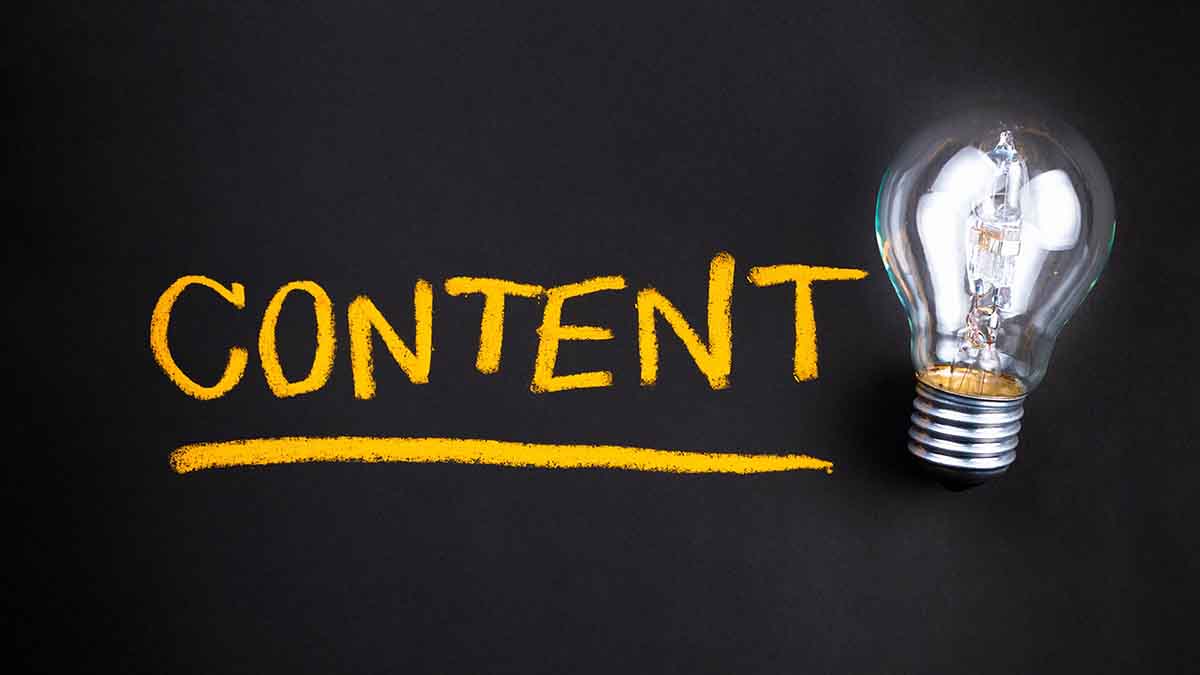Introduction
In the vast realm of stock photo websites, making an informed choice is crucial for content creators and businesses alike. This blog post delves into a comparative analysis between two prominent platforms – Dreamstime and Shutterstock. We will explore various aspects such as content quality, search and navigation features, licensing models, contributor experiences, and customer support. By the end of this exploration, you'll be equipped with valuable insights to make the right decision based on your unique requirements.
Also Read This: How to Submit a Delist Request with Fortiguard Downloader
Content Quality

When it comes to stock photo platforms, the quality of the available content is a paramount consideration for users. Let's dive into a detailed comparison between Dreamstime and Shutterstock in terms of content quality.
Image Resolution and Clarity:
One of the primary factors influencing content quality is the resolution and clarity of images. Both Dreamstime and Shutterstock are renowned for offering high-resolution images suitable for a variety of professional purposes. Users consistently praise the sharpness and detail found in photographs on both platforms.
User Reviews on Content Diversity and Relevance:
A diverse and relevant collection of images is essential for catering to the varied needs of users. Dreamstime boasts a vast library with a focus on diversity, covering numerous themes and styles. Shutterstock, on the other hand, is known for its extensive collection that caters to a global audience, ensuring relevance for a wide range of projects. User reviews suggest that both platforms excel in providing content diversity.
Exclusive Content:
For users seeking unique and exclusive content, the availability of such images becomes crucial. Dreamstime and Shutterstock offer exclusive collections that are not available on other platforms. Dreamstime's exclusive contributors bring a distinctive touch, while Shutterstock's curated collections present premium and exclusive options for users with specific requirements.
List of Content Quality Factors:
- Resolution and clarity
- Diversity and relevance
- Exclusive content offerings
- User satisfaction and reviews
In a nutshell, both Dreamstime and Shutterstock uphold high standards in content quality. The choice between them may depend on your specific project requirements and the style of images that align with your creative vision.
Also Read This: How Fortiguard Downloader Uses AI for Inline Malware Prevention
Search and Navigation

The ease of searching for and navigating through a stock photo platform significantly contributes to the overall user experience. In this section, we'll examine the search and navigation features of Dreamstime and Shutterstock to help you make an informed decision.
Comparison of Search Algorithms:
The efficiency of a platform's search algorithm plays a crucial role in how quickly users can find the images they need. Dreamstime employs a robust search algorithm that takes into account keywords, categories, and contributor information. Shutterstock, with its advanced search capabilities, allows users to filter results based on color, orientation, and even copy space. Both platforms have received positive feedback for their search accuracy, making them reliable tools for users seeking specific content.
Filter Options and Ease of Navigation:
When it comes to filtering options and overall navigation, user-friendly interfaces are essential. Dreamstime provides users with intuitive filters and a straightforward navigation structure, ensuring a seamless browsing experience. Shutterstock, known for its user-centric design, offers a variety of filters and sorting options, enhancing the efficiency of content discovery. Users appreciate the ease with which they can navigate through vast libraries on both platforms.
User Experiences with Finding Specific Content:
The real test of a platform's search and navigation lies in users' experiences in finding specific content. Dreamstime users often commend the platform for its straightforward search process and efficient content discovery. Shutterstock users, too, express satisfaction with the ease of finding diverse and relevant content quickly. Both platforms excel in providing a user-friendly experience, ensuring that users can locate the images they need without unnecessary hassle.
List of Search and Navigation Features:
- Efficient search algorithms
- Intuitive filtering options
- User-friendly navigation
- Positive user experiences
In conclusion, both Dreamstime and Shutterstock offer commendable search and navigation features, catering to users with varying preferences. Your choice may hinge on the specific search functionalities that align with your workflow and the ease with which you can navigate the platforms.
Also Read This: How to Announce Your Career Milestones Effectively on LinkedIn
Licensing and Usage Rights
Understanding the licensing models and usage rights on stock photo platforms is crucial for creators and businesses to ensure compliance and the appropriate use of images. In this section, we'll delve into a comprehensive comparison of the licensing and usage rights offered by Dreamstime and Shutterstock.
Understanding Licensing Models:
Dreamstime and Shutterstock both operate on licensing models that define how users can use and distribute the downloaded content. Dreamstime offers a variety of licensing options, including Standard and Extended licenses, each specifying the permissible usage scenarios. Shutterstock, similarly, provides Standard and Enhanced licenses, allowing users to choose the level of coverage based on their project requirements. It's imperative for users to carefully review and select the appropriate licensing model to avoid any legal complications.
Comparative Analysis of Pricing Structures:
Pricing structures play a significant role in the decision-making process for users. Dreamstime and Shutterstock employ different pricing models, including pay-as-you-go options and subscription plans. Dreamstime's credit-based system allows users to purchase credits and redeem them for downloads. Shutterstock offers subscription plans that grant users access to a specific number of downloads per month. Users often appreciate the flexibility in pricing, and the choice between the two platforms may depend on individual budget considerations.
User Feedback on Licensing Clarity and Flexibility:
User feedback is valuable in understanding how well a platform communicates licensing terms and addresses user concerns. Dreamstime users often praise the platform for its transparent licensing information and the flexibility it provides in choosing the right license for their needs. Shutterstock users appreciate the straightforward approach to licensing but occasionally seek more clarity on specific usage scenarios. Both platforms prioritize user education on licensing, aiming to empower users to make informed decisions.
List of Licensing and Usage Rights Factors:
- Diverse licensing models
- Comparative pricing structures
- User feedback on clarity and flexibility
- Educational resources on licensing
In summary, both Dreamstime and Shutterstock provide users with clear licensing information and flexible options. Your choice between the two may depend on your budget, the specific licensing needs of your projects, and your preference for either a credit-based or subscription-based pricing model.
Also Read This: How to Embed My Behance Project into a Website
Contributor Experience
The process of contributing content to a stock photo platform is a significant aspect for photographers and artists. A smooth onboarding experience, easy content management, and supportive contributor services can greatly impact the overall satisfaction of contributors. In this section, we'll explore and compare the contributor experience on Dreamstime and Shutterstock.
Comparison of Onboarding Process:
The onboarding process sets the tone for a contributor's journey on a platform. Dreamstime and Shutterstock both offer straightforward onboarding processes, allowing contributors to sign up, submit samples of their work, and gain approval to start uploading. Dreamstime is known for its efficient onboarding, while Shutterstock has a well-documented process that guides contributors through the submission requirements.
Ease of Uploading and Managing Content:
The efficiency of uploading and managing content is vital for contributors who often handle large volumes of images. Dreamstime provides a user-friendly interface for uploading images, along with tools to organize and manage content effectively. Shutterstock's contributor dashboard is praised for its simplicity and robust features, allowing contributors to easily track their submissions, sales, and earnings.
Contributor Support and Community Engagement:
Ongoing support and a sense of community contribute to a positive contributor experience. Dreamstime offers responsive contributor support, addressing queries and concerns promptly. Additionally, contributors appreciate the sense of community through forums and events. Shutterstock also provides support channels for contributors, with a dedicated contributor support team and community forums for discussions and networking.
List of Contributor Experience Factors:
- Efficient onboarding processes
- User-friendly content uploading and management
- Responsive contributor support
- Community engagement opportunities
In conclusion, both Dreamstime and Shutterstock prioritize a positive contributor experience through efficient onboarding, user-friendly interfaces, and supportive communities. Contributors may find the choice between the two platforms depends on their preferences regarding the onboarding process, content management tools, and the level of community engagement they seek.
Also Read This: What You Need to Know About the Cost of Shutterstock Images
Customer Support
Accessible and responsive customer support is a critical aspect of any service, ensuring users have assistance when needed. In this section, we'll explore and compare the customer support experiences on Dreamstime and Shutterstock to help you make an informed decision based on your potential needs.
Analysis of Customer Support Responsiveness:
The responsiveness of customer support can greatly impact user satisfaction. Dreamstime is recognized for its prompt customer support, addressing user queries and issues efficiently. Shutterstock also maintains a responsive support team, ensuring timely assistance for users facing challenges. Both platforms prioritize quick responses to enhance the overall user experience.
User Experiences with Issue Resolution:
User feedback provides valuable insights into how well customer support resolves issues. Dreamstime users appreciate the platform's ability to address concerns effectively, providing clear solutions to problems. Shutterstock, too, receives positive feedback for its issue resolution, ensuring that users feel supported and their concerns are resolved to satisfaction.
Exploring Available Support Channels:
The availability of diverse support channels caters to users' preferences. Dreamstime and Shutterstock both offer multiple channels for customer support, including email, live chat, and comprehensive help centers. Users can choose the method that suits them best, ensuring a personalized and efficient support experience.
List of Customer Support Factors:
- Responsive customer support teams
- Positive user experiences with issue resolution
- Diverse support channels
- Efficient help center resources
In summary, both Dreamstime and Shutterstock prioritize responsive customer support, ensuring users have a reliable avenue for assistance. Your choice between the two may depend on your preferred support channels and the overall responsiveness you expect from the platform's support team.
Also Read This: How to Record Shows on YouTube TV
FAQ
Have questions about Dreamstime and Shutterstock? Check out this frequently asked questions section to find answers to common queries and gain additional insights into these popular stock photo platforms.
- Q: What sets Dreamstime and Shutterstock apart in terms of content quality?
A: Both platforms are known for their high-resolution images, diverse content libraries, and exclusive offerings. Dreamstime often excels in diverse themes, while Shutterstock boasts a global collection suitable for various projects.
- Q: How do the licensing models differ between Dreamstime and Shutterstock?
A: Dreamstime and Shutterstock offer different licensing options, including Standard and Extended licenses. Users can choose based on their project requirements, with Dreamstime using a credit-based system and Shutterstock providing subscription plans for downloads.
- Q: Can you elaborate on the contributor experience on both platforms?
A: Both Dreamstime and Shutterstock offer straightforward onboarding processes, user-friendly content management tools, and supportive communities. The choice may depend on individual preferences regarding onboarding and community engagement.
- Q: How responsive is customer support on Dreamstime and Shutterstock?
A: Users praise both platforms for their responsive customer support teams, efficient issue resolution, and the availability of multiple support channels, including email, live chat, and comprehensive help centers.
- Q: Are there any unique features or benefits that differentiate Dreamstime and Shutterstock?
A: While both platforms share common features, Dreamstime's emphasis on diversity and exclusive contributor collections may appeal to users seeking a unique touch. Shutterstock's global reach and curated collections cater to a broad spectrum of user needs.
Conclusion
As we wrap up this comparative analysis between Dreamstime and Shutterstock, it's evident that both platforms have distinct strengths that cater to different user preferences and project requirements. Let's summarize key findings to assist you in making an informed decision based on your specific needs.
- Content Quality:
Both Dreamstime and Shutterstock excel in providing high-quality, diverse, and relevant content. Your choice may depend on the specific style and themes that align with your creative vision.
- Search and Navigation:
Both platforms offer efficient search algorithms and user-friendly navigation. Consider your preferences for search functionalities and overall browsing experience when making a decision.
- Licensing and Usage Rights:
Dreamstime and Shutterstock provide clear licensing information and flexible options. Your choice may hinge on budget considerations, specific licensing needs, and your preference for credit-based or subscription-based pricing.
- Contributor Experience:
Whether you prioritize an efficient onboarding process, user-friendly content management tools, or community engagement, both platforms offer positive contributor experiences. Your choice may depend on your specific preferences in these aspects.
- Customer Support:
Both Dreamstime and Shutterstock prioritize responsive customer support, ensuring users have reliable assistance when needed. Consider your preferred support channels and responsiveness expectations when choosing between the two.
In conclusion, the choice between Dreamstime and Shutterstock ultimately depends on your unique requirements, preferences, and the specific features that align with your creative and business goals. Take the time to explore both platforms and consider user reviews to make an informed decision that enhances your stock photo experience.
